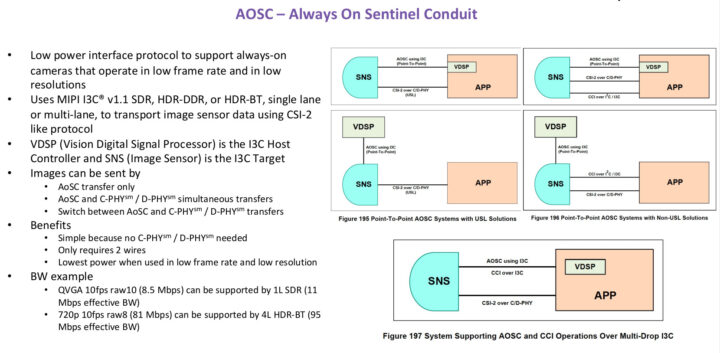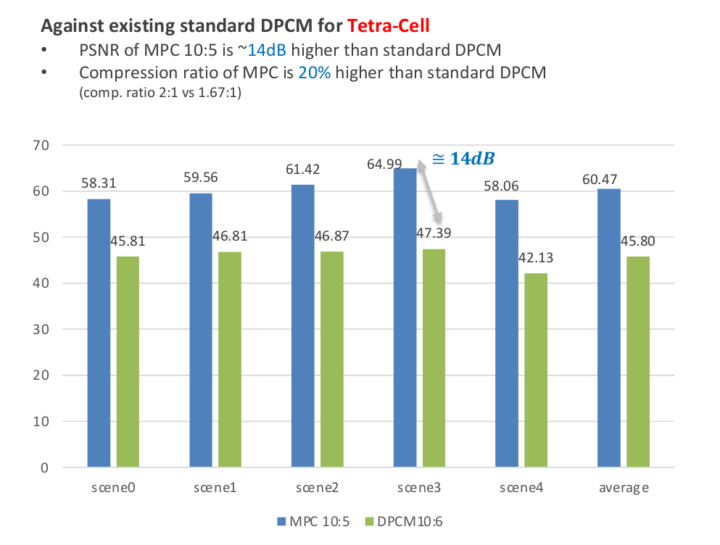While MIPI CSI-2 standard was first introduced in 2005 as a high-speed protocol for the transmission of still and video images from image sensors to application processors, the standard has evolved over the years, and the latest MIPI CSI-2 v4.0 introduces features to better support always-on, low power machine vision applications, high-resolution sensors, and high-dynamic-range automotive image sensors.
The main changes for v4.0 include support for a two-wire interface (MIPI I3C) to lower cost and complexity, multi-pixel compression for the latest generation of advanced image sensors, and RAW28 color depth for better image quality and an improved signal-to-noise (SNR) ratio.

MIPI CSI-2 v4.0 highlights:
- Always-On Sentinel Conduit (AOSC) – Enables always-on machine vision systems with ultra-low-power image sensors and video signal processors (VSPs) continuously monitoring their surrounding environments and having the ability to wake up their more powerful host CPUs when specific events happen. Some use cases include laptop/tablet-based face monitoring, video surveillance, and vision-based vehicle safety applications. AOSC enables image frames to be streamed efficiently from an image sensor to a VSP over a low-power MIPI I3C bus with options to add extra I3C lanes and bandwidth as defined by the I3C specification. Two transport modes are supported: Optimal (OTM) and Smart (STM) with the latter being optional and enabling further power savings.
- Multi-Pixel Compression (MPC) – Provides optimized pixel compression for the latest generation of Tetra- and Nona-Cell image sensors with multi-pixel color filter arrays (CFAs). The MPC feature compresses both multi-pixel and standard Bayer CFA images more efficiently and with potentially higher quality than current methods such as Differential Pulse Code Modulation (DPCM). Reference code is supposed to be available to help integrators evaluate the algorithm and verify their implementations, but I suppose it’s only available to MIPI Alliance members.
- RAW28 pixel encoding – Supports the next generation of high-dynamic-range automotive image sensors for applications such as those required for ADAS and other safety-critical applications.

MIPI CSI-2 v4.0 standard remains backward compatible with all previous versions of the MIPI specification. You’ll find more details in the presentation for the “MIPI CSI-2 v4.0 Panel Discussion with the MIPI Camera Working Group”. It’s highly technical with incomprehensible jargon that will probably be only fully understood by those who have previously worked on MIPI CSI implementations. MIPI Alliance members can also access the full MIPI CSI-2 v4.0 specification on MIPI website.
Thanks to TLS for the tip.

Jean-Luc started CNX Software in 2010 as a part-time endeavor, before quitting his job as a software engineering manager, and starting to write daily news, and reviews full time later in 2011.
Support CNX Software! Donate via cryptocurrencies, become a Patron on Patreon, or purchase goods on Amazon or Aliexpress





I believe that I3C can displace I2C and SPI in a very wide range of applications, even though this division through opening only a subset of this “standard” looks like a shot to a foot, and that is one such application.